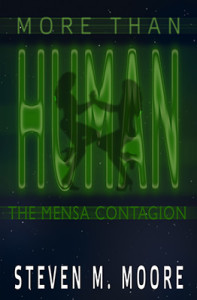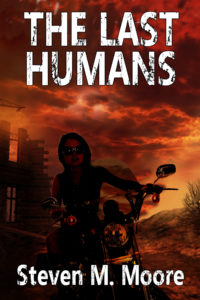Like Asimov, Heinlein, and other sci-fi writers, I’m an ex-scientist who loves to tell stories—all Asimov’s stories were sci-fi, for example; mine are mysteries, thrillers, and sci-fi. (To be fair, Dr. Asimov wrote some excellent sci-fi mysteries! He was also a fan of the mystery genre.) But Asimov might be better known to some readers for his non-fiction popular science books. I once thought of writing them too—it’s writing, after all, and I love to do it—but I was too hooked on fiction to write those kind of books.
Every now and then I occasionally write a blog post in the popular science category, though. I’ve been remiss in doing that, so let’s do one! I can never compete with Dr. Asimov in either sci-fi or popular science, but I’ll do my best.
Let’s talk about scientific scales. Much science in the twentieth century explored scales from the smallest to the largest, from the tiniest bits of matter to galaxies and clusters of galaxies at the far reaches of the cosmos. Astrophysics and cosmology connect the two extremes, and these connections are like good twists in a good mystery.
One might think the smallest scale is determined by quarks—those usually invisible particles that make up protons, neutrons, and a menagerie of strange particles, all organized by the special unitary group SU(8) as proposed by Murray Gell’Man. Instead, I’d propose it’s the Planck length, defined as follows: take the square root of Planck’s constant h multiplied by Newton’s gravitational constant G and divide by the cube of the velocity of light and twice pi (it’s a constant derived from fundamental constants). From the very definition you see that it connects quantum mechanics and gravity. In fact, it is believed to be the length where quantum gravity effects become important. Planck’s length is a very, very small fraction of the size of a proton, and it could very well define the granularity of space-time in our Universe.
The largest scale is the size of the Universe, of course. That’s finite, but it’s expanding, a bit too fast according to conventional theoretical astrophysics, which is a puzzle. Adding to that mystery is the existence of dark energy and dark matter that astrophysicists invented to explain other oddities (these are just names for things the scientists don’t really understand). The presence of dark energy and matter should make the Universe’s expansion slow down more!
We start realizing there’s a lot we don’t know about our Universe. In fact, we don’t even know whether it’s unique. Certain theories add metaverses, and there’s an infinite number of them. Some of those theories were created especially to provide science with dark energy and matter, or help in the quantization of gravity, a vexing problem for astrophysicists.
Infinite numbers of metaverses? An easy way to get at them is to realize that the Universe must have its own quantum state, so, according to the Many Worlds Theory of Quantum Mechanics, at each point on the Universe’s world-line winding around in some higher-dimensional continuum (usually ten dimensions), that quantum state splits up into an infinite number of states, ad infinitum. These many world-lines are called quantum histories. They’ve been used as objects as astrophysicists try to quantize gravity, starting with James Hartle and Stephen Hawking (Hartle was one of my professors at UC Santa Barbara).
All those metaverses, parallel states of our own Universe, lead us to question the concept of infinity itself. Some used to think the Universe was infinite and existed in a steady state, everything arranged neatly so that the more the Universe changed, the more it stayed the same. Let’s accept for the sake of argument that’s not true—i.e. the Universe is finite, although it’s certainly not in a steady state with its expansion. What happens at the other end of the scientific scale? Can we go smaller than the Planck length?
We describe the physical world with mathematics, mostly with real numbers or combinations of them (three space dimensions plus one time, for example). The set of real numbers is a larger infinity than the infinity of integers or even fractions constructed from them. But does the cosmos have to match the larger infinity of the real numbers? In other words, is space-time quantized and countable like fractions? Maybe with the Planck length as the size of a bit of Universe? We could think of these chunks as pixels in space-time. We could no longer say “space-time continuum” because it wouldn’t enjoy the continuity of a real-number based Universe. Every position in space-time would represent a four-dimensional cube—albeit a very small one, to be sure, but the Universe would then be finite at both ends of the size spectrum (technically at the lower end, it would be a countable infinity like integers and fractions).
I enjoy thinking about these questions. I wish someone would answer them!
***
Comments are always welcome!
“Reading Notes for The Last Humans.” This free PDF can be downloaded by visiting the “Free Stuff & Contests” web page at this website. It’s designed to provide useful information to all readers about my new post-apocalyptic novel, and it contains a list of questions that will stimulate discussions in book reading clubs. The ebook is available now for pre-orders on Amazon and Smashwords, and it will be released in print and ebook versions by Black Opal Books on March 30.
While you’re on that web page, be sure to check out the other free PDFs that are available—these are all just a thanks to you for being a reader.
Around the world and to the stars! In libris libertas!


